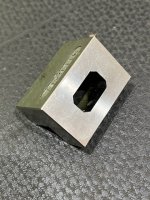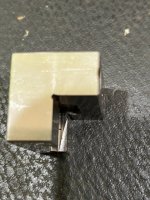I frequently lay out one-off parts by hand. I figure this is good to about 0.01 on a regular basis. If I need precision and/or repeatable positioning on, for example, the drill press, I clean two sides of the part, then use stacked blocks between the part and locators clamped to the table. The limiting factor is then drill deflection, which can be minimized by starting with a stout center drill.
At the high school shop, for speed we have been having students touch off the sides of a part directly with the endmill they are going to cut with. I did some tests and this seems to be repeatable to better than 0.005 if they have any sense of touch in their hands at all. Once they have an edge located, this mill has a DRO so they usually don't have to pick up other features directly. We do have an assortment of other edge finding tools, including a Heimer 3D taster, but no wiggler at the highschool.





